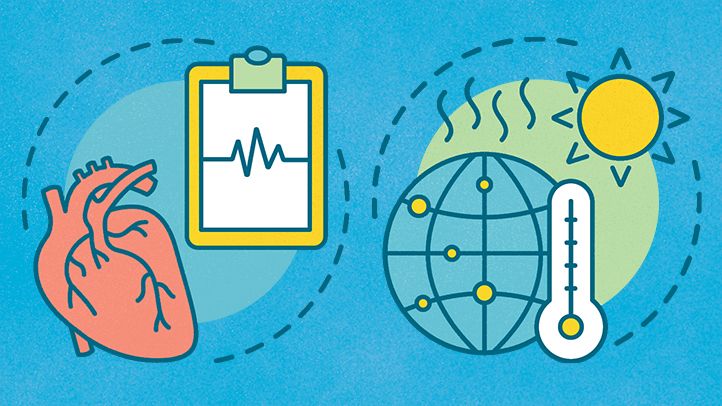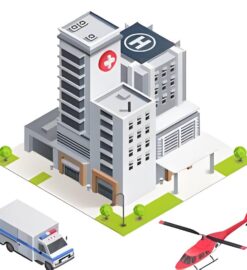Cardiovascular Disease – What are the main causes?

Cardiovascular disease (CVD) is responsible for 1 in 4 deaths here in Australia, and despite being a staggering statistic, cardiovascular fatalities have declined over the past 10 years due to better research, treatments, and medications. In this post, we’ll share everything you need to know and what the main causes of cardiovascular disease are.
What is cardiovascular disease?
You’ve likely heard of heart disease and cardiovascular disease, is there any difference? These terms are often used interchangeably but they aren’t the same thing. There are a variety of conditions that affect the heart (cardio) or the blood vessels (vascular) that are defined as cardiovascular disease. Heart disease is a type of cardiovascular disease.
Different types of cardiovascular disease
There are four main types of cardiovascular disease, they include:
- Coronary heart disease
- Stroke
- Peripheral arterial disease
- Aortic disease
Different CVD conditions
Here are some of the different CVD conditions:
- Angina
- Heart failure
- Vascular cognitive impairment
- Heart failure
- Arrhythmia
- Cardiac arrest
- Cardiomyopathy
- Enlarged heart
- Atherosclerosis
- Coronary heart disease
- Atrial fibrillation
- Peripartum cardiomyopathy (PPCM)
- Congenital heart disease
- Rheumatic heart disease
- Heart block
Risk factors of cardiovascular disease and the main causes
In most instances, cardiovascular disease can be prevented, however, it can be caused by other uncontrollable factors such as family history and congenital heart disease. Here are some of the main risk factors of CVD:
- Smoking
Smoking increases your risk of CVD by 4 times. It affects the heart and vessels in many ways, including increased blood pressure and heart rate, causing inflammation, promoting clot formation, and so many more.
- High blood pressure (hypertension)
High blood pressure is one of the major risk factors when it comes to CVD. It causes irreversible damage to the artery walls decreasing blood flow and oxygen to the heart.
- A high-fat diet
A diet consisting of high fat can lead to fatty deposits building in the artery walls, as it does this, it restricts blood flow and can cause high blood pressure and high blood cholesterol. The deposits can build up entirely and cause a multitude of issues in the body.
- High blood cholesterol
High blood cholesterol also contributes to the build-up of plaque in the arteries.
- Diabetes
Another condition that can cause cardiovascular disease is diabetes, both types 1 and 2. High sugar levels can damage the arteries.
- Not keeping active
Leading a sedentary lifestyle can lead to heavier body mass, elevated blood pressure and higher cholesterol levels.
- Overweight or obese
Those who are overweight or obese are more likely to develop conditions such as high blood pressure or diabetes.
- Family history
People with a family of CVD are at higher risk of developing it themselves.
- Drinking too much alcohol
Drinking too much alcohol can cause issues with both blood pressure and cholesterol levels.
- Stress
Stress can increase blood pressure, and when you experience stress often, this can have a negative effect on your cardiovascular health.
- Ethnicity
Some ethnic backgrounds are at higher risk of CVD than others.
- Sleep apnoea
Those with sleep apnoea are 2 to 4 times more likely to develop abnormal heart rhythms. It drastically increases the chances of heart failure and heart disease.
- Chronic obstructive pulmonary disorder (COPD)
People with COPD are more prone to cardiovascular disease. Having COPD can promote atherosclerotic plaque formation.
- Air pollution
Long term exposure to poor air quality has been linked to atherosclerosis development
Preventing Cardiovascular disease
For most, cardiovascular disease can be prevented by eating a nutritious and balanced diet, maintaining a healthy weight, keeping active, not smoking, and limiting stress and alcohol intake. It’s always a good idea to regularly visit your doctor for a check-up.
Symptoms of Cardiovascular Disease
Some of the common symptoms associated with CVD:
- Chest pain, pressure, tightness, or discomfort
- Trouble breathing
- Numbness, weakness, or coldness in the extremities
- Neck, throat, jaw, abdomen, or back pain
- Dizziness or lightheadedness
- Cold sweats
- Nausea or fatigue
- Some people have no obvious symptoms at all
How Cardiovascular disease is diagnosed
Normally, the doctor will ask you some questions (if possible) and complete a medical examination. Routine tests include a blood test and chest x-ray, and your doctor will likely complete one of the following:
- Electrocardiogram – This tracks the electric signals of the heart and allows the doctor to identify any abnormalities in the heart rhythm.
- Echocardiogram – This method takes an ultrasound of the heart to investigate the hearts structure.
- Stress test – The procedure involves elevating the heart rate by either using a medication or with exercise to see how the heart handles the additional pressure.
- Holter monitoring – This is essentially a portable ECG that you wear continuously for a period of 24 to 72 hours to pick up any issues that couldn’t be found in the original exam.
Treatment for cardiovascular disease
The treatment plan for someone who has cardiovascular disease will differ depending on the type of disease they have, but here are some common options:
- Medication
- Surgery
- Rehabilitation
- Implementing lifestyle changes such as diet, exercise etc
Prevention is always better than a cure, and early intervention can help you address smaller issues with your health before they become big ones. Cardiovascular disease continues to be a prevalent issue here in Australia despite lower case numbers than previous decades, unfortunately, it’s still Australia’s number one killer. The First Aid Shop provides amazing First Aid Kits for all customers!
Disclaimer: This is a guide only. Always seek medical advice from your trusted doctor.



